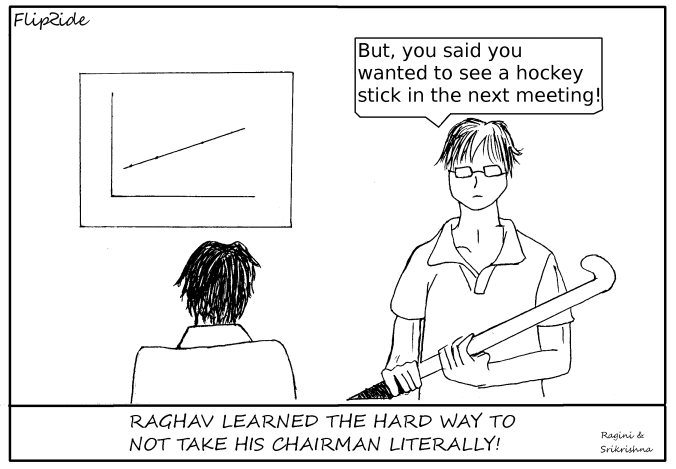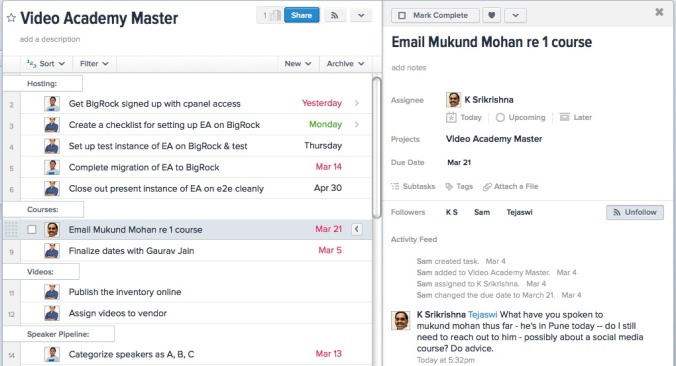“Bear with me;
My heart is in the coffin there with Caesar,
And I must pause till it come back to me.”
As I read Julius Caesar with my fifteen-year-old, I wonder what it is about Mark Anthony’s speech that’s made it a keeper. Sure the Bard had a way of words and it is him speaking rather than Mark Anthony. Yet the words alone, however powerful, fail to explain their hold over us.
Each of us across nations and times, have our own favorite speeches — often cutting across generations — Winston Churchill’s “We Shall Fight on the Beaches” June 1940 speech, Martin Luther King’s “I have a dream” August 1963 speech, Steve Jobs commencement speech in May 2005 at Stanford, Randy Pausch’s Last Lecture in September 2008 and Barack Obama’s “Tuscon Memorial” speech in 2011.
Oratory seems to be a skill that politicians and lawyers (many of whom end up as politicians) have cornered the market on. Starting from Cicero, a lawyer turned politician from Julius Caesar’s time to Barack Obama, yet another lawyer-politician in our own, the power of a well-rendered speech have moved nations. Actors and clergymen, who’ve relied on the gift of their gabs to succeed have just as assiduously cultivated their oratory. In trying to understand what it is that makes their speeches memorable, worth transcribing, passing on through word of mouth from the dawn of time through the age of YouTube, three things stand out.
Content, Context, and Cadence.
Content What is said in a speech is clearly the biggest contributor to its success. No amount of skill or theatrics can salvage an empty speech. The content needs to be clear, concise and compelling. Like poetry it needs to be able to stand alone — complete in itself. Try reading the transcript of any speech you feel is well done and you’ll see why it works. Mark Antony’s speech is an excellent example as is any good tale, be it To Kill a Mockingbird or Cannery Row, content still trumps all. But you knew this.
Context When your spouse (or in my case my teen) wakes you up and say’s “I had a dream,” or when an interview candidate tells you “I have a dream” it doesn’t evoke the same sense of Dr. King’s words at the Lincoln Memorial. Context is important. When four men carrying a funeral bier in India, utter “Ram, Ram” or as Gandhi calls out “Hey Ram” when he was shot or in the epic Ramayana, when Rama’s father calls out after his exiled son “Rama, Rama, Rama” — the same words mean very different things. So context is what makes what’s ordinary and makes it extraordinary. The words “a more perfect union” when used by Barack Obama yesterday in the context of the Trayvon Martin case takes on a whole new level of poignancy than in his original speech titled “A More Perfect Union” in 2008.
For Brutus is an honorable man;
So are they all, all honorable men
Mark Antony’s words taken out of context lose their power.
Cadence makes the difference between a good speech and a great speech. The pauses and silences of a speech often can and do say more than the words themselves.
When English teacher Taylor Mali narrates his poem, “What teachers make?”
“I decide to bite my tongue……..instead of his” his pause adds emphasis.
When Jesse Jackson in his speech at the Democratic convention in Atlanta in 1988, says “With so many guided missiles ……… and so much misguided leadership, the stakes are exceedingly high” his pause serves to highlight the irony not unlike Mark Antony’s literal “And I must pause till it come back to me.”
Repetition is the other not-so-secret weapon of powerful orators.
Here’s Dr. Martin Luther King speaking at the Lincoln Memorial:
But one hundred years later, the Negro still is not free. One hundred years later, the life of the Negro is still sadly crippled by the manacles of segregation and the chains of discrimination. One hundred years later, the Negro lives on a lonely island of poverty in the midst of a vast ocean of material prosperity. One hundred years later, the Negro is still languishing in the corners of American society and finds himself an exile in his own land.
Later in the same speech, the phrase I have a dream is used ten, yep ten times in consecutive sentences as is Let freedom ring nine times in his closing words. Cadence.
Content, Context, and Cadence.
Make sure your next speech covers the 3 Cs.















You must be logged in to post a comment.